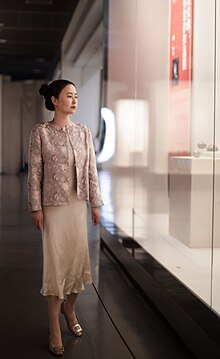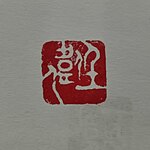Draft:Wei Ren (ceramic artist)
| Submission declined on 14 January 2025 by SafariScribe (talk). This submission's references do not show that the subject qualifies for a Wikipedia article—that is, they do not show significant coverage (not just passing mentions) about the subject in published, reliable, secondary sources that are independent of the subject (see the guidelines on the notability of people). Before any resubmission, additional references meeting these criteria should be added (see technical help and learn about mistakes to avoid when addressing this issue). If no additional references exist, the subject is not suitable for Wikipedia.
Where to get help
How to improve a draft
You can also browse Wikipedia:Featured articles and Wikipedia:Good articles to find examples of Wikipedia's best writing on topics similar to your proposed article. Improving your odds of a speedy review To improve your odds of a faster review, tag your draft with relevant WikiProject tags using the button below. This will let reviewers know a new draft has been submitted in their area of interest. For instance, if you wrote about a female astronomer, you would want to add the Biography, Astronomy, and Women scientists tags. Editor resources
|  |
 Comment: Doesn't meet WP:NARTIST. Safari ScribeEdits! Talk! 10:26, 14 January 2025 (UTC)
Comment: Doesn't meet WP:NARTIST. Safari ScribeEdits! Talk! 10:26, 14 January 2025 (UTC)
Artist Wei Ren | |
|---|---|
 Wei Ren at her art exhibition | |
| Born | Dingshu Town, Yixing |
| Nationality | Chinese |
| Known for | Pottery |
| Seal | |
 | |
Wei Ren (simplified Chinese: 任伟;born in China in 1978)is a national zisha clay arts and crafts artist[1]. As an artist of pottery art, she has created many artworks.
In 2018, Wei Ren was awarded the title of Liaoning Province pottery Art Master by the Liaoning Provincial Government of China.
Wei Ren's artworks have been collected by multiple museums, including the National Museum of China[2] and WuXi Museum.[3]
Early life and education
[edit]Wei Ren was born in Yixing, a city in Jiangsu Province, China. Her family is known for its pottery crafts background. Her grandfather Degui Ren is a ceramic artist. Her father Hongxi Ren is also a pottery artist.
When she was a child, she lived in Dingshu Town, Yixing, her hometown, where her family has lived for more than 160 years. Her father was obsessed with creating pottery and was influenced by the family spirit. Wei was also influenced by this and said: I only want to do one thing in my life - pottery."
When she was young, Wei entered China University of Geosciences to study art design.
Career
[edit]Wei's career as an artist began with her work Confucian elegance[4], which was collected by Wuxi Museum in 1995.[5]
In 2018, Wei was awarded the title of Liaoning Province Ceramic Art Master by the Liaoning Provincial Government of China.
Wei released her collection "lian ni" in 2020.[6]
In 2021, Wei's work "Flower Language Pot"[7] was published in Shandong Ceramics Books.[8] In the same year, Shandong Ceramics published an article about Wei's work "Jinwu Xianrui Pot".[8]
Wei Ren's work "Shipiao" was collected by the National Museum of China in 2022.
In 2024, the Changzhou Art Museum in China held an art exhibition for Wei Ren titled "Blooming Flowers", displaying her 12 works of art.[9]
Awards and recognition
[edit]In 1995, Wei Ren's works of Confucian elegance[4] were collected by Wuxi Museum[5] in China.
References
[edit]- ^ 中华英才. "工美名家|任伟:创新是紫砂艺术的生命". Weixin Official Accounts Platform. Retrieved 2025-01-14.
- ^ 中华英才. "工美名家|任伟:创新是紫砂艺术的生命". Weixin Official Accounts Platform. Retrieved 2025-01-14.
- ^ "现代任伟制紫砂儒风雅韵壶 - 典藏 - 文物藏品库 - 无锡博物院". www.wxmuseum.com. Retrieved 2025-01-14.
- ^ a b "现代任伟制紫砂儒风雅韵壶 - 典藏 - 文物藏品库 - 无锡博物院". www.wxmuseum.com. Retrieved 2024-10-15.
- ^ a b "WUXI MUSEUM". www.wxmuseum.com. Retrieved 2024-10-15.
- ^ Ren, Wei. 恋泥 [Lian Ni]. The Publishing House of China Culture. ISBN 978-988-74231-6-4.
- ^ 山东陶瓷 [Shandong Ceramics] (in Chinese). ISSN 1005-0639.
- ^ a b "山东陶瓷". ISSN 1005-0639.
- ^ "繁花似锦:任伟紫砂作品展_展览_艺术_装饰". www.sohu.com. Retrieved 2024-11-11.
